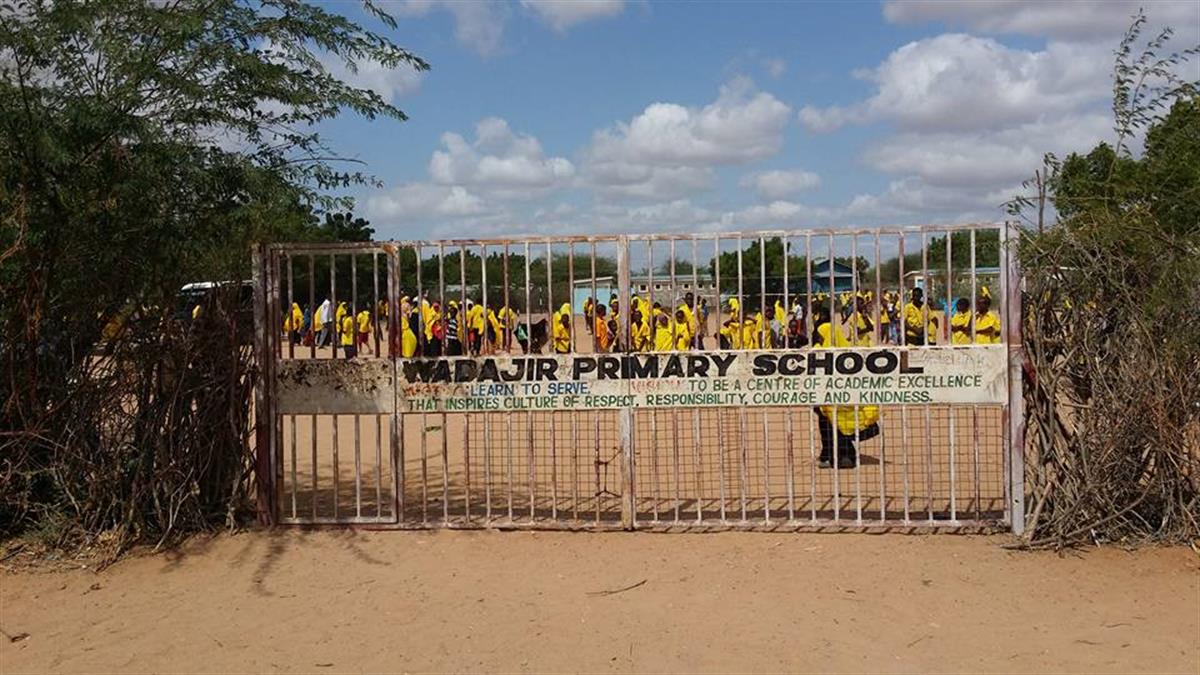
In Kenya something changed on May 6, 2016: the country's Interior Minister announced that Kenya could no longer handle the refugees, that it therefore wanted to close the camps, especially Dadaab. But the inhabitants are worried, desperate for reassurance that nothing will happen and that they will be able to stay.
By Andrea Bianchessi, AVSI Country Representative in Kenya
1. The refugees in Kenya: context and current challenges
In Kenya, there are 613,844 persons who have or are waiting for refugee status. Of these, 445,000 are from Somalia, 125,000 from Southern Sudan, and 40,000 come from Burundi, Ethiopia, Eritrea, the Democratic Republic of Congo (DRC), Rwanda, Tanzania and Uganda. They all have arrived in Kenya, hoping to find assistance and a better future.
Sixty thousand refugees live in the informal neighborhoods of Nairobi, such as Eastleigh. The others live in two large camps; in Kakuma, in northern Kenya, which opened in 1994 and hosts 200,000 refugees, and in Dadaab, on the border with Somalia, which opened in 1992 and currently has 350,000 residents. For the first refugees who arrived more than 20 years ago, Kenya is already their home.
But something changed on May 6, 2016. Kenya's Interior Minister Joseph Nkaisserry announced that the country could no longer handle the refugees, that it therefore wanted to close the camps, especially Dadaab, within the year and that the refugees would have to reenter their countries of origin. The main reason stated was the cost, above all in terms of human lives and security.
The cause is Al-Shabaab, the terrorist group that periodically attacks military and civilians. The Government of Kenya's insistence to close Dadaab is primarily over security concerns, saying attacks on its soil have been planned from inside the camp.
According to the Kenyan Government, on April 2, 2015, the commandos who killed 147 young people at the University of Garissa, just 100 kilometers away, had come from Dadaab. In the world's largest refugee camp, the militia finds fertile ground for enlisting new recruits.
2. The AVSI Experience in the Dadaab Refugee Camp
Since 2009, AVSI has carried out projects in Dadaab designed to empower the people with skills that they can use either in Kenya or upon reentry in their countries of origin. AVSI works particularly in education, having restructured and built 327 new primary schools, twenty-five educational buildings (libraries, formation centers) and having trained 1,250 teachers.
Among these trained teachers are two hundred women--an extraordinary fact because in 2011 there were no women teaching. At the beginning, their husbands followed along with the wives during their first classes, as they were curious and a little suspicious of this initiative.
The men consented and a few have even participated in the training as well. AVSI is currently training 600 primary school teachers through courses taught in the Somali language and recognized by both the Kenyan and Somali Ministries of Education.
Furthermore, AVSI Foundation has seen how its educational projects are an essential instrument in the fight against radicalization. AVSI believes that a holistic education of the person is the remedy through which it is possible to propose a way of looking at reality as something positive and to promote the desire for growth, justice, love and truth that are innate in each person.
In recent years, AVSI has also helped groups of Boy and Girl Scouts in Dadaab to form and become active. This is another way of promoting the values of friendship and brotherhood among children and teenagers, and of fostering a positive use of free time, especially during school vacations, when Al-Shabaab recruitment activity is more intense.
An unexpected positive outcome became evident, when the boys and girls from the Scout groups convinced their peers, who had abandoned their schooling, to re-enroll and continue their education.People in Dadaab are very worried about the Government's declaration of its plan to close the camp. They are asking for an assessment of the situation, and are desperate for reassurance that nothing will happen and that they will be able to stay.
The security situation in Somalia is still critical and the support services are even less than what the refugees can find in Dadaab. And yet, nostalgia remains strong, such as the nostalgia felt by fifteen year-old Mohamed who arrived at Dadaab just a few years ago. He sings a piece that he wrote, entitled, “What a Lovely Place.” It refers to his homeland, Somalia, and the refrain is an appeal, “peace, peace, peace!”